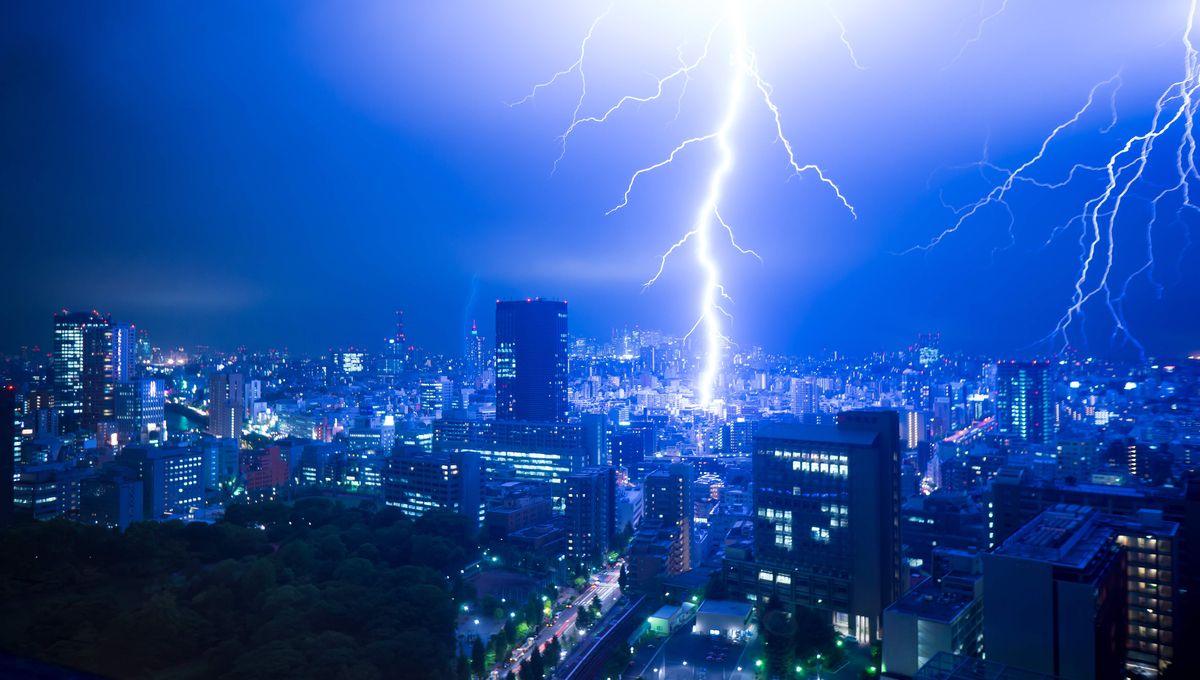
Anyone who has watched the dazzling displays produced by lightning in a thunderstorm can appreciate why it has inspired awe and fear across our history. Even in our modern world, lightning strikes represent one of the most destructive natural phenomena impacting human society. Knowing where and when lightning may strike is a significant challenge, and even existing methods to protect critical infrastructure don’t always succeed. However, this may be about to change.
According to the Japanese telecommunications company Nippon Telegraph and Telephone Corporation (NTT), a new method for summoning lightning may be appearing in the skies before too long. NTT claims to have achieved a world’s first by successfully triggering and drawing lightning using a drone that harnesses electric field fluctuations. The drone does this through a nifty lightning protection cage that’s designed to prevent it from malfunctioning or getting damaged, even when directly struck.
NTT hopes that such cage-equipped drones could protect cities and important infrastructure in the future, as they work towards a “society free from lightning-related damage,” they say in a statement.
In Japan alone, the estimated annual cost of lightning damage ranges from ¥100 to 200 billion (somewhere between $650 million and more than $1.3 billion US). So, there is a good reason for wanting ways to mitigate further damage in the future. However, existing methods of controlling lightning can be a bit hit-and-miss (pun intended). Traditional lightning rods can protect some spaces, but their range is limited and in some cases – such as wind turbines or outdoor event venues – they can’t be installed at all.
This is why NTT started to explore rapidly advancing drone technology to create new ways to address errant lightning strikes. Their new “drone-triggered lightning” technique involves flying a protected drone into position of an approaching storm cloud and actively triggering a strike, the discharge of which can then be safely guided away from vulnerable places.
The team behind this innovation conducted a lightning-triggering experiment using the drone between December 2024 and January 2025. In this experiment, the drone ascended to an elevation of 900 meters (2,953 feet) in a mountainous area of Hamada City, Shimane Prefecture, where it approached a thundercloud.
The team identified when this cloud would be approaching by way of a device known as a field mill that monitored the electric field at the ground level. When the electric field strength increased due to a coming thundercloud, the caged drone was released into the heavens.
This occurred on December 13, 2024, when the team detected an approaching cloud. The drone they sent up to meet it was also equipped with a conductive wire that connected it to an electric switch on the ground. The wire was observed to have a large electric current running through it, which reached a voltage of 2,000 volts between the wire and the ground. This triggered a lightning strike directed at the drone, which only resulted in some mild melting of the protective cage. The drone was otherwise fine and continued to operate without issue.
The cage is designed to be mounted on commercially available drones and is made of conductive metal that serves as a shell. When struck by lightning, this shell redirects the electricity away from the drone itself. Additionally, the cage is designed to distribute the lightening radially in a way that cancels out the strong magnetic fields generated by the current, which minimizes any electromagnetic interference.
The team also tested the drone’s survivability with artificial lightning, and found that it was able to survive strikes of up to 150 kiloamperes – five times more powerful than a natural lightning strike.
The success of these tests could well indicate a new step towards protecting vulnerable urban spaces and other important sites from lightning strikes. From here, NTT plans to conduct further research into how to predict lightning strikes in a location and to understand how lightning works. They also hope to develop a way to not only trigger future strikes, but to also capture the energy they release.
Source Link: World-First Drone-Summoned Lightning May Protect Cities From Damage In The Future